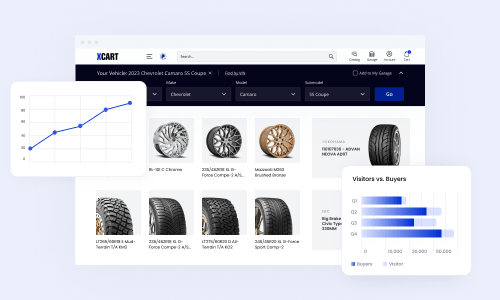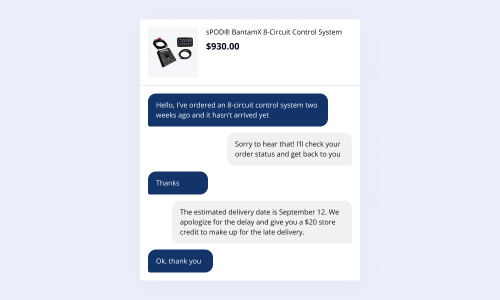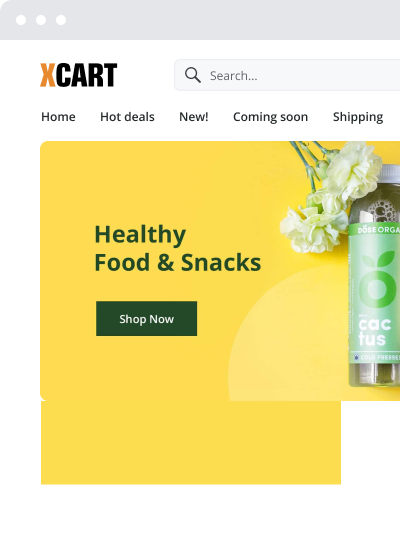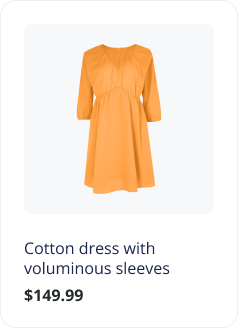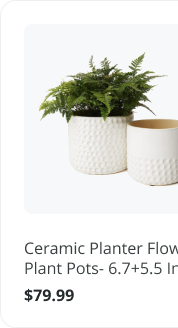eCommerce Content Marketing: How to Plan Content For The New Normal [2021]

This blog post was originally contributed by Norman Arvidsson, a blogger at Independent writing.
Amidst COVID-19, creating a winning content marketing plan may be a real challenge. The habitual strategies you were successfully implementing before the crisis will hardly be applicable to the new normal, and that’s a fact.
You’ll have to start thinking about people first and focus more on the things that add value, feel good, feel human. You may have to start measuring content effectiveness a little bit differently. You’ll have to analyze the user’s feedback or look at consumption measures, and probably adjust your keywords to new transitional terminology.
Simply creating high-quality content is definitely not enough. You should teach yourself to think outside of the box and start implementing the new methods of content creation. Reinventing the wheel won’t help, but innovating the things that already exist will do.
You need a well-thought-out content marketing strategy — one based on your goals, consumer data, the most popular platforms for your niche, SEO, your budget, and much more.
In this article, you will learn about all of the content marketing venues and best practices that fit the new normal.
What Is an Ecommerce Content Marketing Strategy?
Every word, every visual you create and place somewhere online is content. It includes your website, blog, social media posts, case studies, paid advertising, and any interaction you have with an online user.
The strategy part comes in when you design an overriding plan for your content. This content marketing plan must be based upon questions you ask yourself.
- What is your major message?
- Who are your target customers?
- What stage of the sales funnel are they in?
- Where do those customers hang out online?
- What are those customers’ needs that you can meet and problems you can solve?
- Who are your competitors?
What lead generation techniques should you use with them?
The answers to these questions will let you develop a perfect content strategy for your eCommerce store. Get out a piece of paper and write down the answers to these questions. If there are any you cannot answer, you have some work to do before you write another piece of content.
I. Your Website is Your First Content
Starting an online store is a major undertaking. Before you open your online business, you have lots of work to do. You already have your products/services identified; now the other big decision relates to those questions listed above, especially as you design a website — your first piece of content.
The first step that you should make is selecting the eCommerce platform that fits your business needs. You can choose to create your eCommerce site on your own, using any number of great tools, such as X-Cart. Or you can hire a designer and developer to do this for you. Whichever choice you make, you have to be in charge.
Ready to Create Your First Piece of Content?
We’ve got you covered. X-Cart eCommerce platform has got everything you need to get established online. Schedule a quick call with one of our solution advisors and take a product tour.
Schedule a CallIf you are looking to provide an amazing user experience, you’ll have to consider the following:
- Identify your buyer personas.
- Create a mobile-first design.
- Make your site load quickly and improve user experience.
- Optimize your store for search engines.
II. The Latest Content Marketing Trends You Should Consider in 2021
There’s so much promotional clutter, or ‘noise’, in eCommerce, making it difficult for you to stand out and for your customers to find something that is really worth their attention. You will have to really get your marketing cut through the noise, creating content that resonates with your audience.
Below are a few tips that will push you to the right direction:
- Embrace the impact of storytelling — brains resonate with stories, so you should be focusing more on the narrative style of writing.
Stories that are personal and emotionally compelling engage more of the brain, and thus are better remembered, than simply stating a set of facts.
- Start delivering experiences instead of just rewriting the content that already exists.
- Don’t get stuck with long-term planning. The Coronavirus pandemic canceled a lot of things, showing us that the best time is the here and now. The same is true of content. Things in eCommerce are changing too fast bringing on new hot topics for discussion that you may want to capitalize on. I suggest that you should be up to date with the latest news rather than planning things ahead. Leave some time in your schedule for topical relevant information.
I think in this current environment, having foundational elements that maintain some flexibility so you can balance short-range and long-range planning is key to achieving success.
- Provide a valuable sense of connection. The pandemic caused lots of stress for business owners, and changed the way we communicate with each other. Your goal, as a content marketer, would be to connect with your potential customers and give them the support they need. Ensure them that they are not alone coping with anxiety and depression, there are loving people around ready to give them a hand.
The real value is in that sense of, “Oh, I’m not alone. Other people are going through the same thing.
- Talk to your team members and understand what worries your target audience most of all. To create content that resonates with your audience, you have to really understand their concerns.
- Schedule biweekly 15-minute chats over coffee to connect with your clients and understand their pain points.
- Create a dedicated Slack channel to be able to get feedback on the regular basis.
- Gather valuable feedback from product, sales, and customer relation teams on the most frequently discussed questions.
- Act quickly. While you risk moving too fast with the content, there’s also a risk of missing an opportunity. Be the first to jump on trends — this is what matters much in the rapidly changing times we live in.
- Throw yourself into video production. What about using TikTok for content promotion? Since video content is getting more and more popular among a wider audience, this new platform could be a good venue for your brand.
It [TikTok] is now starting to become a B2B marketing darling in the US with quite a few successful campaigns under its belt by major US retailers.
- Simply creating content isn’t enough. Much content is produced on the web every single day which makes it hard to stand out. You have to work out a promotion strategy and define the channels you are going to use to share your content.
- Start repurposing your content. Convert blog posts into videos, record webinars using an online video editor, and upload them to YouTube, and share. Create a series of posts in social media. Bundle your blog posts into weekly digests.
- Get active in online communities, like Reddit, LinkedIn, Facebook, and others. Oh, and have you already signed-up for ClubHouse? It’s worth a look.
- Invest your digital marketing efforts in ultra-personalized content. As with rendering personalized customer experiences, you should start focusing more on the niche topics, prioritizing long-tail keywords over the short-tail ones.
- Tap into the ultra-local content marketing. It will make it easier for you to reach local audiences.
Resist the urge to produce generic content in order to appeal to as wide an audience as possible…at least sometimes. If you’re offering products or services at a local level, make your marketing a good mix of global and local.
- Find opportunities outside the US. If you think that the major part of your blog audience are the residents of the US, think again. This was true a few years ago, but now it has dropped down to 53%. This is the reason why companies are translating their content into different languages.
III. Identifying Topics to Cover in Your Blog
If you have answered the questions above, you know what your target audience wants and needs. It is your job to “prove” that you can give them that, as well as solve their problems with your product(s). Here’s a quick content strategy example:
A Company That Got It Right
Dollar Shave Club started its online store with a target audience of millennial men. What did they need? A solution to the inconvenience of remembering to buy razors or the prospect of having to use dirty, old razors because they forgot to stop at the store. Yes, the company sells razors, but the real value to the audience is the convenience of a subscription — getting those razors delivered to their door once a month.

For $2500, the founder created an explainer video that spoke to the value, not the razors per se. It actually went viral, and the rest is history. The company has expanded, offers all sorts of personal care products, and its content still focuses on solutions, not products (of course, the video is just plain funny too).
So, if you are asking what is an eCommerce content marketing strategy, you can begin with this as a concept. Your topics must address audience needs and problems and speak to value, not product.
Where Do You Find Topics?
- Begin with Google. Type in some search terms such as “news about [your niche]” or just some keywords related to it. The search results may bring up some topic ideas.
- Check out your competitors’ blogs. Again, you can search by keywords. But an even better source is Buzzsumo. Here, you can type in keywords, and the results will show the most popular content in your niche, including blog posts, videos, etc., many from your competitors.
- Make sure you check the social media accounts of those competitors.
- As you read content that others have created, think about how you can make it better. And think about offshoots of that content that may provide value to your audience. Your goal is to write valuable content that is much better than theirs.
- Check out vertical niches — that is, those who serve the same audience you do. If, for example, you sell gardening tools, look at the blogs of landscapers and nurseries. If you sell home décor, check out interior decorator and design blogs.
- And here’s a novel idea. How about asking any current customers what they would like to learn or know?
- Find influencers. Reach out to experts in your niche. Access their blogs and social media accounts. Start participating in discussions; look at the topics they choose to write about. (More about influencers later).
IV. Crafting That Amazing Content
You know your audience; you know where they hang out online; you know the hot topics for content in your niche. Now comes the real work — crafting that content that will “work” for your blog, your social networks, your emails, and even your paid advertising.
The Blog
Here you want lengthier content pieces, and your goal is to educate, to entertain, and to inspire. These are the pieces that you will drive your audience to from other places.
Know this: your content must be creatively written, must have stunning headlines, and must include visuals and videos. Consumers are picky these days. And they are also in a hurry.
They want content that keeps their interest, that allows them to “see” more than read, and that they can find useful right now, as well as share with their communities.
This is tough. If you are not a creative, witty writer, then find others who are. There are plenty of sources for both great copywriters and content marketing tools to help you create content.
Keep in mind that there are definite trends in content that you will want to incorporate. These include such things as video, of course, but also newer technologies, such as AR/VR.
Another key element in your blog content is SEO. Google developed new algorithms that involve a lot more than mere keywords. In fact, SEO has become much more complicated, involving lots of hard work if you do it on your own. It will be a wise move to access some SEO tools, developed by experts who know far more than you and use those tools for better indexing and rankings.
V. Social Media Marketing Content
This is a very different medium from a blog. Social media platforms should be used to improve brand recognition, develop relationships with target audiences, and drive those audiences to your website and blog. And when you get that traffic, your SEO is impacted as well.
If you’ve done your research and know where your audience hangs out, you are ready to craft content specifically for those couple of platforms.
Note: You cannot do social media marketing well, if you try to hit all platforms, just hoping that potential customers will find you. You need to pick only two, three max, and focus on establishing a regular and consistent presence there. Here is a rundown of the types of content you will want to craft for each of the major social media platforms.
1. Facebook
While “older,” Facebook still commands the largest social media use. You might want to think about learning to use Facebook Live, to run video sessions. And you should certainly incorporate user-generated content. Check out the Facebook pages of ModCloth, Jack Daniels, and even Dollar Shave Club.

User-generated content results in lots of great conversations and discussions and keeps a loyal customer base that is also willing to share.
2. Instagram
Instagram is a visual medium. Here you can feature products if you have great images for them, and even customers using those products. Instagram videos are now pretty “hot”, too. And given that conversations can be started, this is another way to develop personal relationships with followers.

The other great thing about Instagram is that the use of multiple hashtags (think keywords) will let searchers find you. And there is also the ability to buy sponsored shout-outs and recommendations — this will increase followers.
3. Twitter
Here, you can give short descriptions of your content that you have on your eCommerce site or blog and drive readers to those places. It’s a great way to let followers know that there is new content they may be interested in.
4. Pinterest
Another primarily visual platform. What you are interested in here is that viewers will tag your product or images, and then these will show up on their walls.
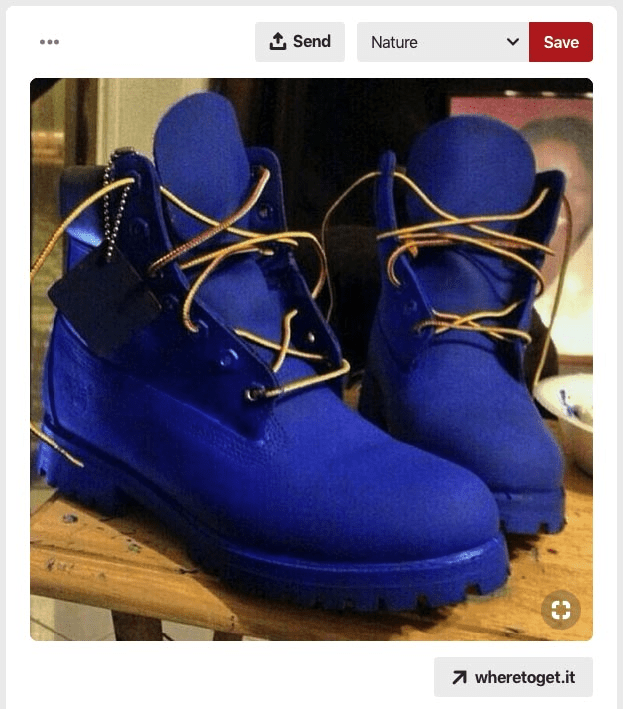
This will create an automatic link to the product page on your eCommerce website. This constitutes a backlink, and search engines monitor backlinks.
5. YouTube
Videos are hugely popular with any audience. If you can create engaging and entertaining videos — how-to’s or explainer pieces — you can drive viewers to those from your site, blog or other social media posts. And viewers who find your videos entertaining, highly informational, etc. will share them.
6. LinkedIn
LinkedIn is a professional social media community and is far more appropriate for B2B marketing content. You may want to consider LinkedIn if you want to become known as an “expert” in your product niche. But it is a great amount of work and may better be left as a B2B content marketing strategy.
VI. The Promotion Part: You Want Backlinks for Sure
Backlinks occur when consumers access you from links that have been placed in other places. And they are a big SEO factor. But, let’s qualify this a bit.
Links that you place yourself, from your social media platforms, for example, are not that valuable. But links that come from reputable experts and influencers in your niche are. These are considered high-value backlinks, and search engines love them.
This is a process that takes time. What you need to do is this: Identify the big players in your niche. Follow them on social media; access their blog posts; participate in discussions. Over time, that expert or influencer will recognize you as a regular follower.
At this point, you can nurture the relationship by asking to re-post one of their posts on your blog. And, if you have an amazing piece of content, you can then ask if that expert will post it.
You can also seek out reciprocal relationships for backlinks but be very careful. These arrangements must be made with reputable and related sources, or you may actually be penalized by search engines.
You should also submit your best posts to general sites that are highly respected — Huffington Post, Forbes, Entrepreneur, Business Insider, Inc.com, Buzzfeed, etc.

Access these sites and review the content submission requirements. Don’t become discouraged with rejections. Keep at it.
VII. Become an Expert Yourself
This, again, is a longer-term process. But there are a few things you can do to work toward this.
- Get on Quora and start answering questions.
- Get on Reddit and offer value, not product sales.
- Craft podcasts and webinars.
- Keep commenting on the content of related posts.
- Build trust using video series that is instructional in your niche. Market it on your social media platforms, through email marketing, and even through targeted paid advertising. (In this article you’ll discover a few more ways to market your videos.)
Overwhelmed?
This is all a lot to absorb.
But here’s the thing: you have to have a well-thought-out eCommerce content marketing strategy. Without one, your online store will just sit there.
All of these elements of online content marketing are important, but you can’t just dive in and attack them all at once pouring all your content marketing efforts. Choose one or two of these strategies, implement them, and then move on to the next one.
Be consistent, be committed, use the human resources and the great content marketing tools out there, and your store will become profitable.

Helen is an SEO and Content Marketing Specialist. She has been creating and planning content for over 10 years, with 5+ years specializing in eCommerce.








